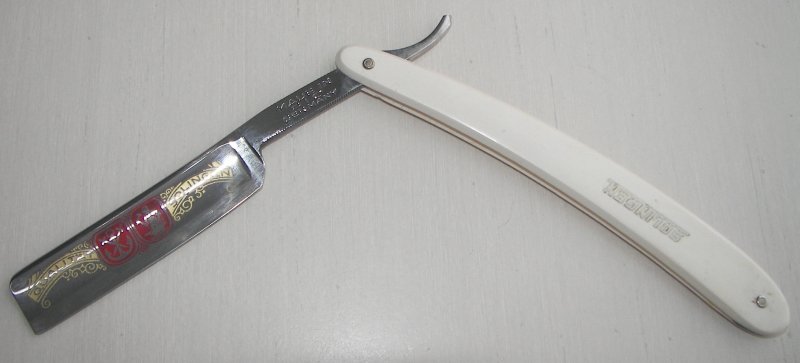Your most sustainable choice is an old straight razor, but there's a reason the replacement is called a "safety razor"... you're much less likely to kill yourself with a safety razor. But these last a long time and you can shave using a small amount of water and a soap stick. You can buy one second hand, that's how long they last.

Much safer is an old style single-blade safety razors. They are almost plastic-free, and the disposable blade is only plastic coated. They look like this:

and the blade like this:

Those will be almost entirely recycleable, and I'd be confident putting a collection of used blades in the steel recycling bin. I wouldn't put one in there, simply because it's surprisingly sharp and unexpected so you could easily hurt someone. But a bit of tie wire holding 20 or more in a bundle is safer and more obvious.
There are also recycleable disposable razors like these where the company that makes them will take them back. BIC en France has a stupid "mail-back" program where the cost of recycling is greater than any possible return on the razors (you can't just put a stamp on a razor so you have to package them, then transport them etc etc, it's very inefficient).
As far as compared-to-electric goes, the electric razor can be powered by renewable electricity, but it's very hard to find one that's not made of hard-to-recycle parts including a lot of non-renewable plastic. You almost certainly won't be able to pay someone else to disassemble it, you'll have to do that yourself and then take the parts to a scrap metal dealer.
With a disposable or plastic-blade razor you're probably less sustainable than an electric razor purely on the amount of plastic used. But that's assuming your alternative is a decent electric shaver, rather than one that needs to be replaced every year or two. My experiment with an electric shaver lasted about 5 years, but when the shaver stopped working I decided that I preferred blade shaving.
Finally, you can make how you shave more effective
Carefully rub a little Bikini Soft Razor Saver or baby oil on your razor’s blades after each use. The oil will keep the blades sharp and rust-free.
Instead of buying cheap disposable razors that come all in one piece, buy cartridge razors. These have higher-quality handles with removable heads, meaning you only have to throw the small piece with the razor blades away. Also, consider double-edge razors as opposed to those with three or more edges since they require fewer raw materials.
Consider shaving less often. Some men can skip shaving on their days off from work. Women can shave only below the knee if they do not wear short skirts or not all if they so choose.
Much of the environmental impact of each shaving session actually comes from all the hot water you use. If you shave at the sink, do not leave the water running. If you shave in the shower, turn off the water while you work on your legs.
This article from Slate.com posits that electric razors have a lower carbon footprint than even eco-friendly disposable razors.
See more at: http://recyclenation.com/2015/04/how-to-recycle-razor-blades#sthash.RysGfalm.dpuf


